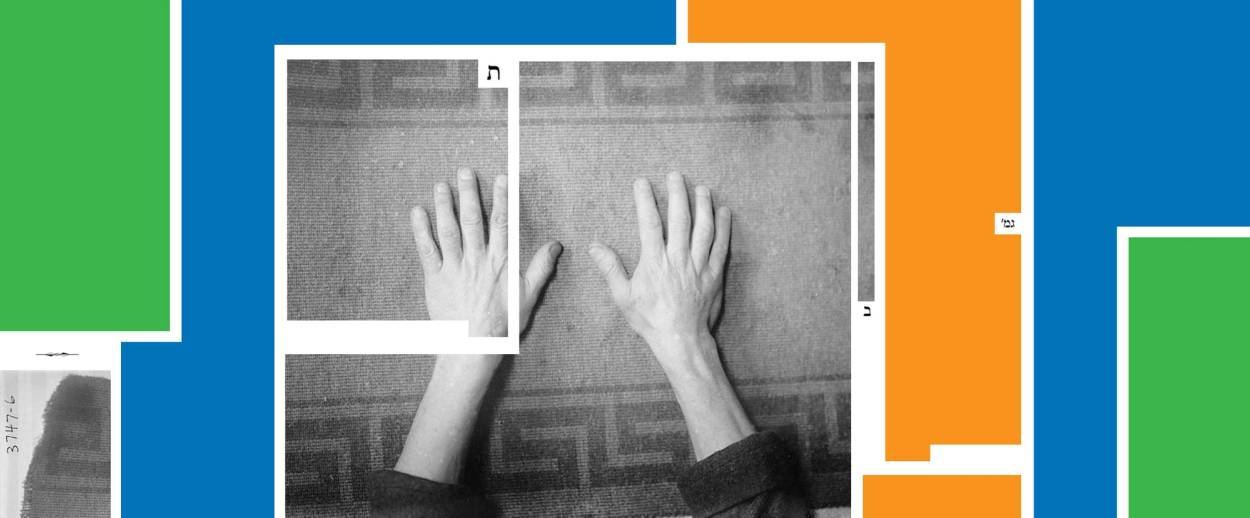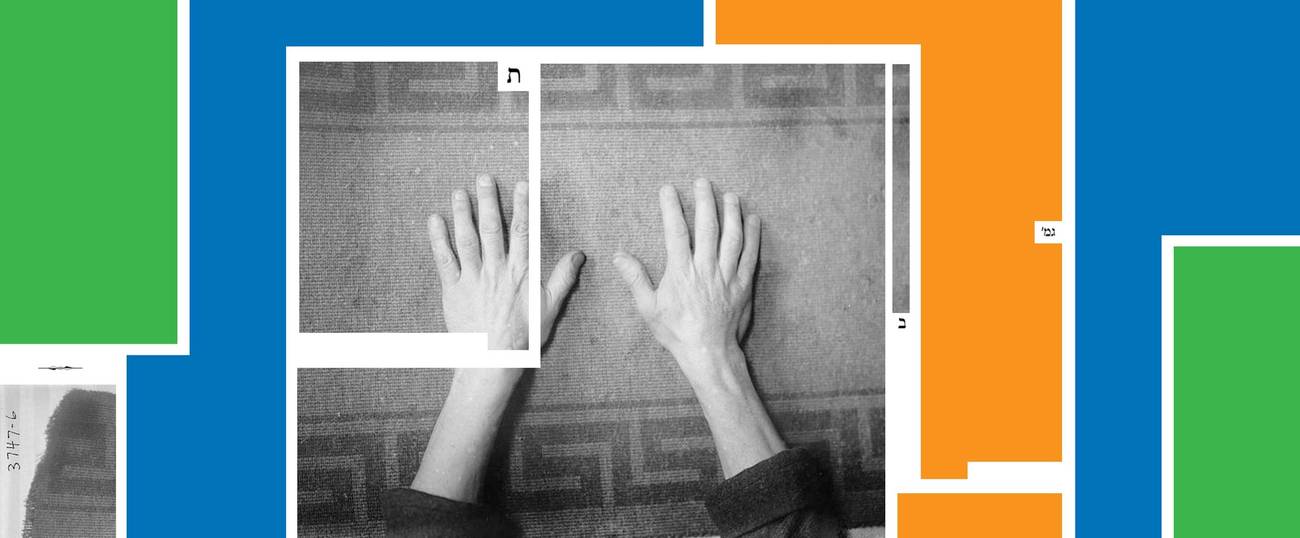On the One Hand
In this week’s ‘Daf Yomi’ Talmud study, the rabbis search the mists of time to try to recover which hand is to be used in the rituals of sacrifice and offering




Literary critic Adam Kirsch is reading a page of Talmud a day, along with Jews around the world.
This week, Daf Yomi readers continued to follow Tractate Menachot’s discussion of the proper way to sacrifice a meal offering in the Temple. As we saw in last week’s column, the stages of a meal offering are parallel to those of an animal offering. Where an animal sacrifice involves collecting blood, conveying it to the altar in a sacred vessel, and presenting it on the corners of the altar, a meal offering does the same thing with flour, usually mixed with oil and frankincense. And just like an animal sacrifice, a meal offering can only be performed by a qualified priest—and only using his right hand.
But how do we know that only the right hand can be used? This is never specified in the Torah: The verse in Leviticus simply says, “And the meal offering was presented, and he filled his hand from it.” As Rabbi Zeira remarks in Menachot 9b, “This hand, I do not know what it is”: Why shouldn’t it be the left, just as well as the right?
The answer given in the Gemara is that, whenever a priest’s hand is mentioned in connection with a sacred ritual, his right hand is always meant. According to Reish Lakish, “Any place in the Torah in which it is stated that an action is performed with a finger or by the priesthood, this teaches that it is performed only with the right hand.” We can deduce this from the single occasion in the Torah where the left hand is specifically mentioned: In the ritual for purification of a leper, the priest is directed to pour oil “into the palm of his own left hand.” Because the Torah goes out of its way to make clear that the left hand is used in this case, it stands to reason that in every other case, where there is no specification, the right hand is implied.
Even once this is established, however, another question remains. When the priest uses his right hand to take a scoop of flour from the meal offering and put it in the sacred vessel, how does he know how big a handful to take? One might assume that a heaped handful is better than a stingy one, but this turns out to be incorrect: “The handful that is lacking or that is outsized is unfit,” says the Gemara. Too much flour is as bad as too little.
What’s more, to ensure that a full handful of meal is taken, the priest must make sure that he does not pick up any debris along with it, such as a pebble or a piece of salt. If he does, the handful is considered unfit. Even trickier, the handful must not include any frankincense. Since the sacred vessel usually includes a mixture of flour, oil, and frankincense, this means the priest must take care to scoop up only flour.
All this assumes, however, that we know just how the handful is to be scooped up. But that turns out to be a subject for dispute between Rava and Abaye, two of the great paired antagonists in the Talmud. According to Rava, the priest scoops up the meal “as people normally remove handfuls”: that is, he puts his hand in the meal palm up and uses his five fingers to gather flour against the palm.
But Abaye disagrees, citing a baraita which explains that each of the five fingers has a different ritual purpose. The little finger is used for measuring a unit of distance called a “span,” which is the length from the pinky to the thumb. The middle finger is used for measuring a cubit, which is the length from the elbow to the tip of that finger. And the fourth finger is used “for removal of a handful of meal from a meal offering.” By this standard, it would appear that the pinky finger is not used in scooping. Instead, according to Rav, the priest “bends his middle three fingers until the tips of the fingers reach over the palm of his hand, and removes the handful.” The thumb and the little finger, which have been left free, are then used to wipe away any excess flour from the top and bottom of the handful. This requires significant manual dexterity—so much so that, the Gemara says, scooping a handful was “the most difficult rite in the Temple.”
The Gemara goes on to consider alternative methods of scooping. What if, instead of putting his palm up, the priest puts his hand on top of the flour with the palm down, and uses the fingers to gather it up? Or what if he slides the side of his palm along the side of the bowl, pushing the flour into his open palm? In all these cases, the rabbis are uncertain how to reply, saying only teiku—the question “stands” unresolved.
Likewise, doubts are raised about what happens if the priest uses the sacred bowl in an unconventional fashion. What if the bowl is overturned and the flour is placed on it, instead of in it? This would seem perverse, but again the Gemara says teiku. Presumably, the priests who actually served in the Temple would have known the answers to such questions. But they are lost in the mist of time, and it is up to the rabbis to try to reconstruct the ceremonies as best they can. After all, Jewish priests would need some guide for how to proceed when the Temple was rebuilt—as the rabbis were certain it would be, someday.
***
Adam Kirsch embarked on the Daf Yomi cycle of daily Talmud study in August 2012. To catch up on the complete archive, click here.
Adam Kirsch is a poet and literary critic, whose books include The People and the Books: 18 Classics of Jewish Literature.